Camera comparison: Moto G5 Plus vs Samsung Galaxy S7


Last year, the Moto G4 was the surprising winner of the best camera in the mid-range category, winning out over competitors like the iPhone 6s and the Nexus 6P. It’s successor, the Moto G5 Plus, also holds a lot of promise. So we decided to compare its camera, which could potentially be the best mid-range camera of 2017, with the camera on the Galaxy S7, the best from 2016.
(This comparison was made possible thanks to the joint efforts of Luis Ortega from androidpit.es and Stefan Möllenhoff from androidpit.de).
The photos we compared were taken in automatic mode and in extreme lighting situations, to really put the capacities of the different features to the test. We also carefully looked at differences between the white balances, dynamic range, color reproduction and how the sensor behaved in various ISO sensitivity settings.
In the end, we decided to use a tripod to get the highest amount of details in each photo. Using a tripod also has the added bonus of negating the optical image stabilizer of the S7, which can’t be taken into account when looking at differences in quality. Lastly, we didn’t use HDR mode, which improves quality in high contrast settings.
Technical specs table
| Samsung Galaxy S7 | Moto G5 Plus | |
|---|---|---|
| MP (main) | 12 MP | 12 MP |
| Aperture (main) | f/1.7 | f/1.7 |
| Sensor (main) | Sony IMX 260 | Sony IMX 362 |
| Flash | LED | dual LED |
| Focus | Autofocus phase detection | Autofocus |
| Focal length | 26 mm | ~26 mm |
| Sensor size | 1/2,5'' | 1/2,55'' |
| Pixel size | 1.4 µm | 1.4 µm |
| Stabilizer | Optical Image Stabilizer | Software Stabilizer |
| MP (front) | 5 MP | 5 MP |
| Aperture (front) | f/1.7 | f/2.2 |
Moto G5 vs S7 Plus: details in a well-lit setting
For short distances with good light, both cameras take very good pictures, as you can see in the comparison below. The first thing that caught our eye though, was the difference between the two purples of the flowers. In this environment, the S7 produced a more natural color reproduction, while the Moto G5 colors were slightly more saturated.
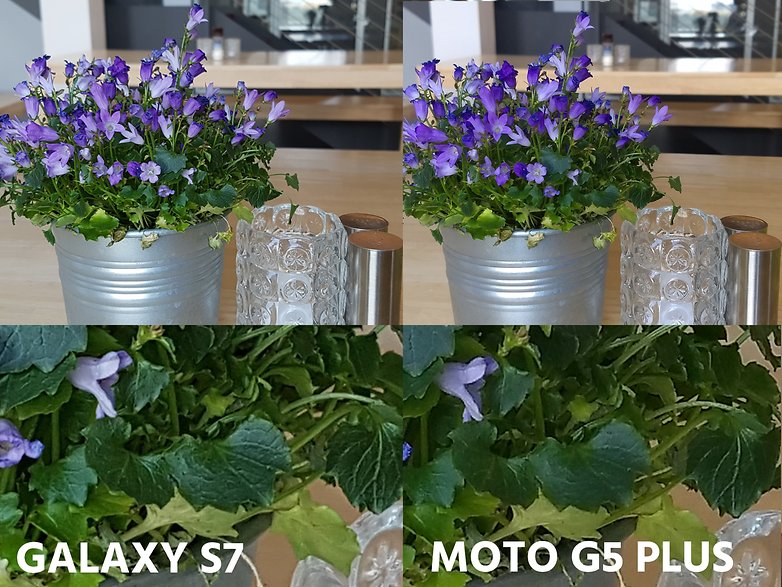
Magnifying the image, the photo from the S7 has greater detail in the foreground. If you don’t blow the picture up, the difference isn't so obvious, but you can still tell that there is a lack of detail in the Moto G5 Plus image. The G5 Plus, on the other hand, produces cleaner definition in the background, which helps you to make out those fuzzy, faraway details.
Moto G5 vs. S7 Plus: high contrast
To avoid any confusion, I’d like to reiterate that HDR mode was deactivated on both cameras.
Where we really start seeing a difference between the cameras was in scenes of high light contrast. Below is a photo taken with the S7 where we were able to see the different colors of the clouds as well as details in the darker, interior areas.
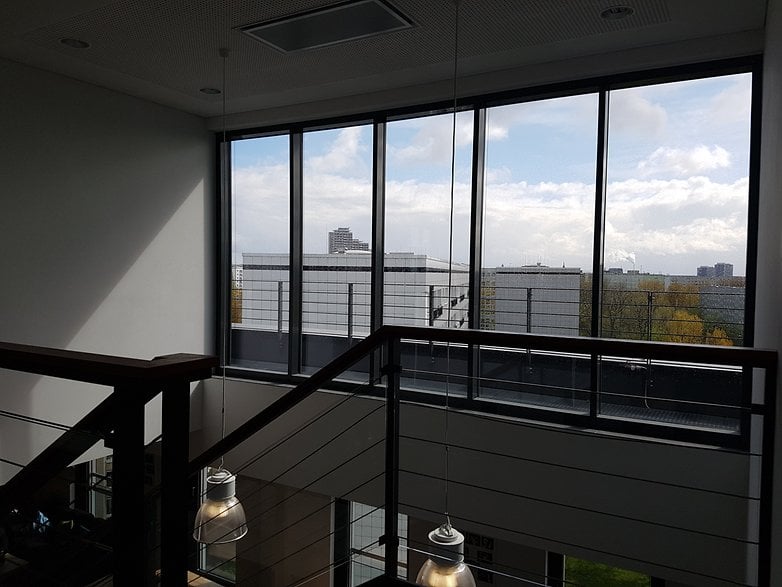
However, on the Moto G5 Plus, we don’t see the same level of detail in the background clouds nor the shady foreground areas. One example of this contrast is the square in the ceiling, which is a bit clearer on the photo taken with the S7.
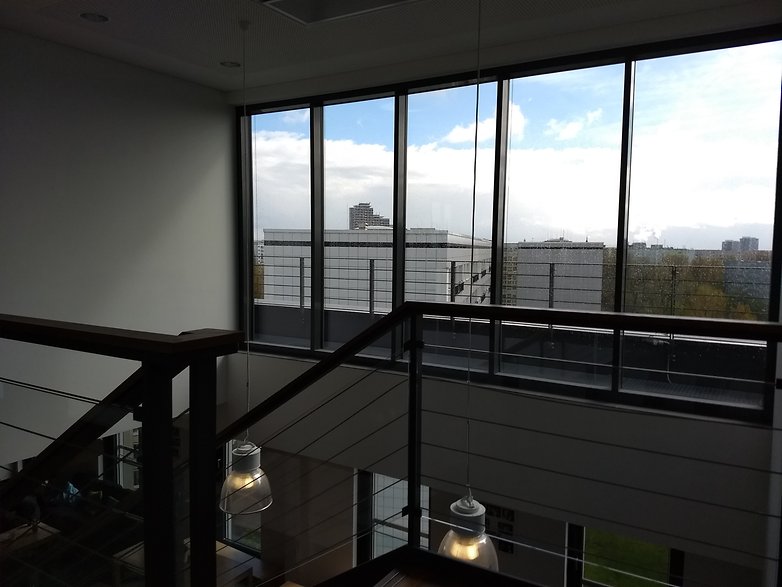
For the time being, we’d say that the S7 has a much wider dynamic range than the Moto G5 Plus, seeing as it’s capable of capturing more levels of brightness. Taking a look at the colors, it seems like the S7 captures more vivid tones as well (note the tree canopies in the distance).
Moto G5 vs. S7 Plus: landscape
Landscapes normally have large contrasts between lit and shaded (dark) areas. Again, we can see how the S7 offers a wider dynamic range, more levels of brightness, more white and gray tones, and also crisper details in dark areas.
The colors of the photo taken with the S7 are more vivid than those taken with the Moto G5 Plus.
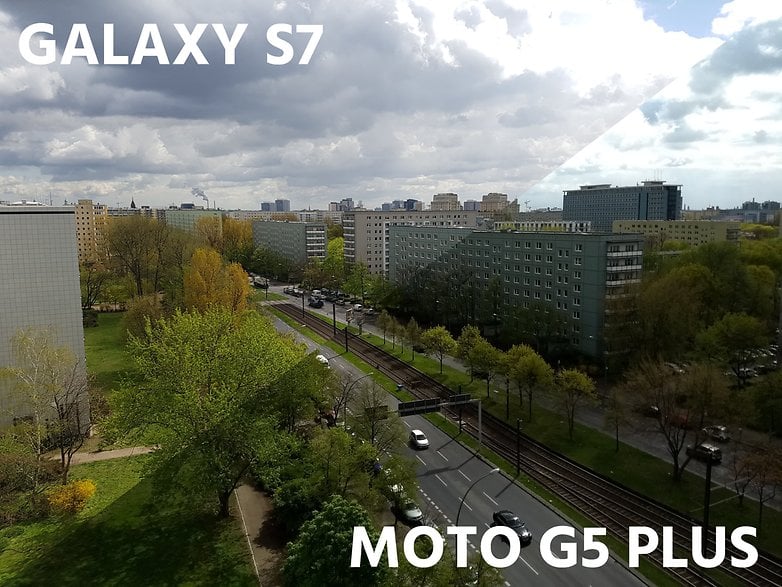
Moto G5 vs. S7 Plus: night
The more challenging the environment, the clearer the differences become between the two cameras. In the following side-by-side comparison, we can clearly see how the S7 defines the details of the statue without saturating the whites - the Moto G5 Plus saturates the white. We can also make out more background detail with the S7 image. The letters are better defined and the golden colors on the roof behind the columns are much worse quality on the Moto G5 Plus image. Lastly, the Lenovo device also has more noise in darker areas.
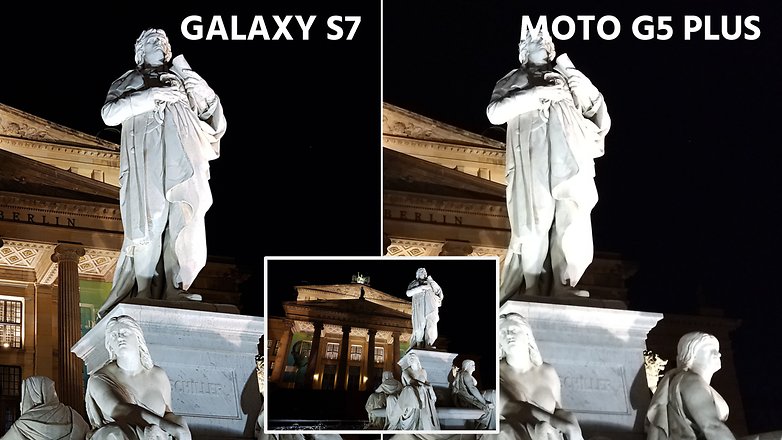
In the following two photos, we see differences in very low-light conditions. Once again, the crispness and colors are better on the S7. Taking a closer look at the settings selected by each device to capture the photos, we see that the S7 went with a lower ISO sensitivity and slower shutter speed than the Moto G5 Plus.
On the one hand, this setting has the advantage of being able to reproduce more detail while on the other hand, there’s a possibility that it could turn out blurry if we hadn't used a tripod. The camera on the S7 comes with an OIS, optical image stabilizer, so it looks like Samsung decided to go with a riskier shot hoping that the stabilizer would counteract our shaky hands.
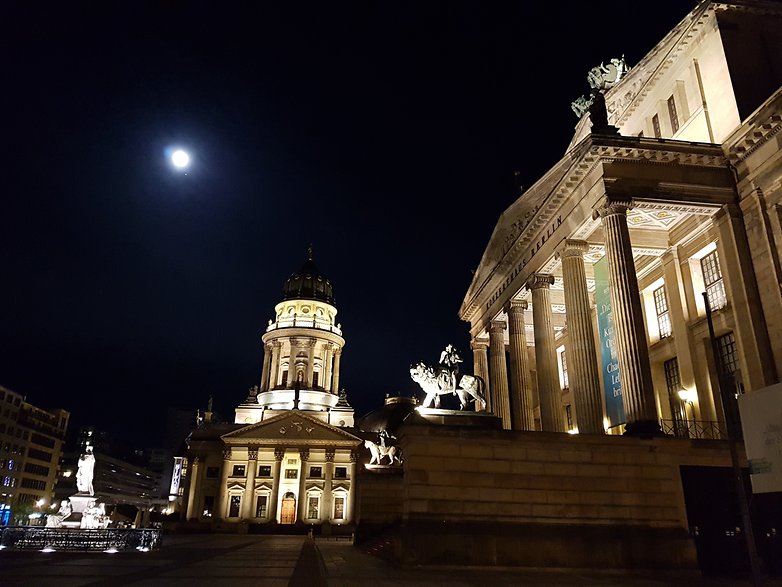

Conclusion
The technical specs of the two cameras are quite similar: the same manufacturer (Sony), same resolution, same aperture, while the sensor on the Moto G5 Plus is a newer generation. But for short distances, we notice differences.
The details and dynamic range of the S7 are better, the colors seem to be less saturated but even so, when there’s a high contrast of light, colors in darker areas don’t appear to be very natural. The image processor may have a default automatic HDR, something that the Moto G5 Plus lacks.
If we had to give a performance grade to the Moto G5 with respect to the Galaxy S7, we’d say that, if the photos of the S7 get a 10, in good light, the G5 Plus would get an 8 but in low light, this would fall to a 7. In any case, this is quite respectable for a device that costs less than $250. It could very easily be the best mid-range camera out there.
The other big difference between the two cameras, which I’m sure you’ve figured out by now, is the price. When this article was published, the price of the Galaxy S7, despite having been around for a year, costs about $200 more than the recently released Moto G5 Plus. This price increase can be seen in the quality of the sensor, the optical stabilizer and, of course, in the photo processing as the results are better.




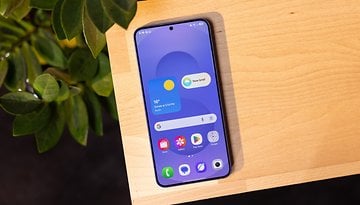
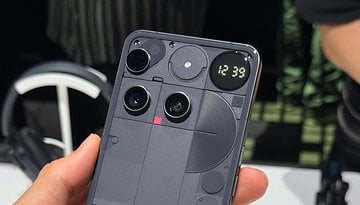



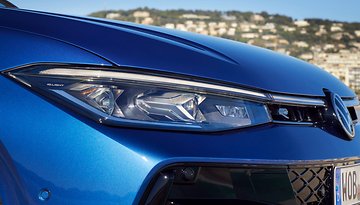

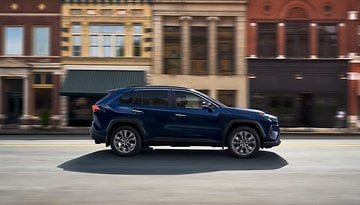


Is this Motorola's fault? I mean, judging by the sensor name and the camera specs I'd say it should be better than the one on the S7 or at least to be on-par.
May be the processor has something to do with image processing capabilities.
MOTO G5 plus is available at 250$ in India.
And camera of moto g4 plus sucked ... mainly scratches on its camera glass.